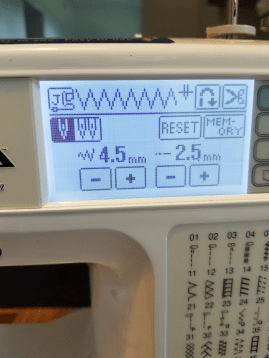Hi, I’m Maggie and this swimwear sewing tips contributor post is my first blog post! How exciting!
 I started sewing swimsuits last summer when I tested Ajaire’s Classic Maillot Swimsuit and I instantly fell in love with the style and all the different options. Now with the new Sash Swimsuit, Miss S is set for a long time! Living in Florida, swimsuits are a necessity, so I made her about 7 suits last year and 3 already this year. In the process, I picked up a few tricks that I’d love to share with you. Below are a few sewing swimwear tips I’ve assembled, but feel free to comment with your favorite tip or trick in case I miss any!
I started sewing swimsuits last summer when I tested Ajaire’s Classic Maillot Swimsuit and I instantly fell in love with the style and all the different options. Now with the new Sash Swimsuit, Miss S is set for a long time! Living in Florida, swimsuits are a necessity, so I made her about 7 suits last year and 3 already this year. In the process, I picked up a few tricks that I’d love to share with you. Below are a few sewing swimwear tips I’ve assembled, but feel free to comment with your favorite tip or trick in case I miss any!
 1. Swimwear is very slippery. For this reason, it’s a good idea to pin your fabric together before cutting.
1. Swimwear is very slippery. For this reason, it’s a good idea to pin your fabric together before cutting.

2. I’ve used swim lining before, but I really like the look and feel of swim fabric as a lining. I like to baste stitch the main and lining fabrics together before attaching the elastic so they don’t slide around while I’m sewing.

3. Make sure you use a new STRETCH needle.


4. On a regular sewing machine, there are generally three stretch stitches that are most commonly used: triple straight stitch (4), lightning bolt stitch (5), and zig zag stitch (7). I prefer the triple straight stitch, but whichever you choose, just make sure to check your seam allowance since the zigzag can hit inside the seam allowance and throw everything off a bit.

5. I have found a Teflon Foot and pushing the fabric a little at the front helps the feed dogs not to over stretch or tug the fabric too much.

6. Swimwear requires several pieces of elastic, some of which are similar in length. I label my elastics so I don’t have to measure them again when they’re ready to be used.

7. When sewing the elastic, I prefer to first sew it into a loop. I find it easier to maintain an even stretch this way.

8. I place the overlapping portion of the elastic a little off of where the seams meet to reduce bulk.



9. I do not have a coverstitch machine, but I do like neat finishes, so I baste the elastic, fold it over, and then zig zag. Afterward, I remove the basting stitches. I have found a setting of 4.5mm width and 2.5mm length has given me the best results in tacking down the elastic.



10. I love the look of a rolled hem and I use my serger to accomplish this effect. I set my stitch width to 0 and do not touch the lower looper, upper looper, or needle tension. I do not pull the fabric at all, since the feed dogs do enough pulling to give it a slight curl. Stretch thread in the upper and lower loopers gives a nice even coverage. Side note: Miss S thought it would be cool to “decorate” my serger with my husband’s address labels and I didn’t have the heart to remove them.

 I hope you find these tips helpful! Don’t forget that this is the last chance to get the Classic Maillot and the Sash Swimsuit on sale for only $5 a piece!
I hope you find these tips helpful! Don’t forget that this is the last chance to get the Classic Maillot and the Sash Swimsuit on sale for only $5 a piece!



Great tips, Maggie! Thank you!
Yw 🙂
What is the best elastic to use?
Swim elastic holds up to wear and tear the best, but I’d stay away from the clear stuff. I actually just use regular elastic that I purchase by the bolt cause I personally have never had a swimsuit where the elastic wore out before the bathing suit itself. 🙂 This is from the Additional Materials section of the Sash Swimsuit:
3/8″ (1cm) braided, knit, or swim elastic – not non roll and not the clear swim type
I agree Ajaire.
I used the plastic elastic once, it was hard to stretch and ended up being extremely tight.
I’ve used swim knit elastic twice, it’s worked fine.
I mainly use regular braided knit elastic. It’s the least expensive and I’ve never had an issue. We live in FL and have a community pool. So we’re the 2-3 times a week from April to early Nov.
Thanks for the tips!
🙂